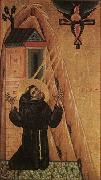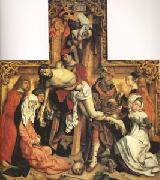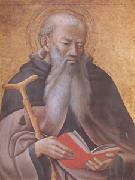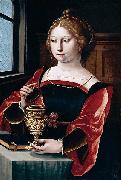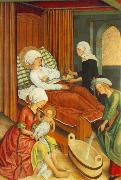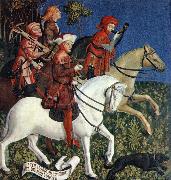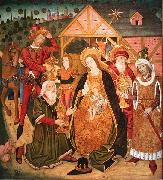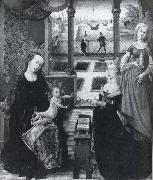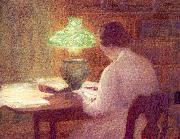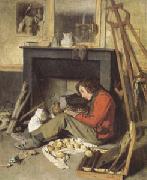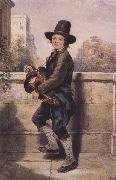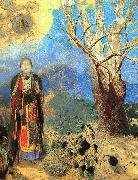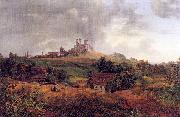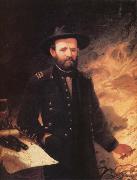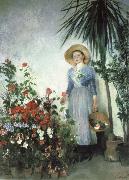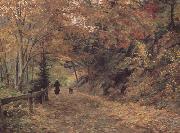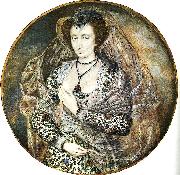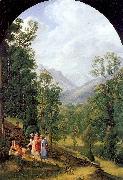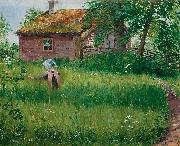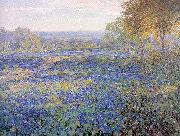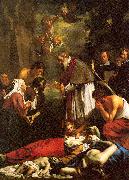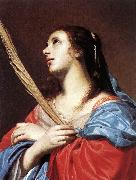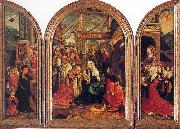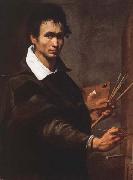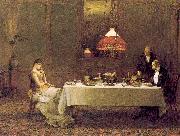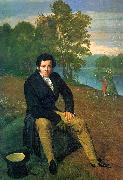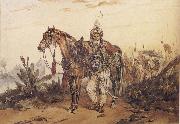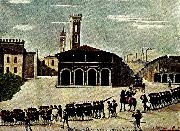|
|
|
|
|
|
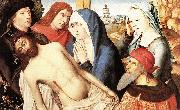 |
Master of the Legend of St. Lucy
|
|
(fl. 1480-1510) was an unidentified Early Netherlandish painter who worked in Bruges, now a city in Belgium. His name comes from for an altarpiece in the church of Saint James in Bruges, which is dated 1480 and depicts three scenes from the life of Saint Lucy. Since then, twenty-five to thirty-five paintings have been attributed to the same hand. He may have trained Spanish students at his studio in Bruges. Many of them are characterized by views of the city of Bruges in the background, and can be dated according to the level of construction of its belfry. He may have trained with Dieric Bouts, and was certainly influenced by Bruges' greatest artist at the time, Hans Memling.
|
|
|
|
|
|
|
|
|
|
|
|
|
|
|
|
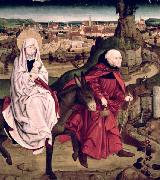 |
Master of the Schotten Altarpiece
|
|
was a German painter, active in Nuremberg during the 14th and 15th centuries. His name is derived from an altarpiece dated to about 1390, which once stood in the church of St. Mary in Schotten. The altarpiece was dismantled in 1828.
|
|
|
|
|
|
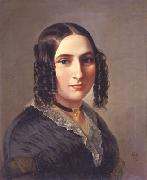 |
Moritz Daniel Oppenheim
|
|
(January 7, 1800, Hanau, Germany - February 26, 1882, Frankfurt am Main) was a German painter who is often regarded as the first Jewish painter of the modern era. His work was informed by his cultural and religious roots at a time when many of his German Jewish contemporaries chose to convert. Oppenheim is considered by the scholar Ismar Schorsch to be in sympathy with the ideals of the Wissenschaft des Judentums movement, because he remained "fair to the present" without denying his past.
Oppenheim was born to Orthodox Jewish parents at Hanau, Germany in 1800; he died at Frankfurt am Main in 1882. His niece was the wife of student and fellow painter Benjamin Prins, Rosa Benari.
He received his first lessons in painting from Westermayer, in Hanau, and entered the Munich Academy of Arts at the age of seventeen. Later he visited Paris, where Jean-Baptiste Regnault became his teacher, and then went to Rome, where he studied with Bertel Thorwaldsen, Barthold Georg Niebuhr, and Friedrich Overbeck. There he studied the life of the Jewish ghetto and made sketches of the various phases of its domestic and religious life, in preparation for several large canvases which he painted upon his return to Germany. In 1825 he settled at Frankfurt, and shortly after exhibited his painting David Playing Before Saul, to see which a great number of admirers from all parts of Europe visited his studio. In 1832, at the instance of Goethe, Charles Frederick, Grand Duke of Saxe-Weimar-Eisenach conferred upon him the honorary title of professor.
|
|
|
|
|
|
|
|
|
|
|
|
|
|
|
|
|
|
|
|
|
|
|
|
|
|
|
|
|
|
|
|
|
|
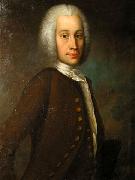 |
Olof Arenius
|
|
a Swedish portrait painter, and son of a minister in Upland, was born in 1701. He studied under David von Krafft, and afterwards went to the Netherlands to study the old masters. His portraits and miniatures in oil are much esteemed, and are to be found in all the public galleries, as well as in the best private collections, in Sweden. Many of them have been engraved. He died at Stockholm in 1766.
|
|
 |
Olof Hermelin
|
|
Sweden (1827 -1913 ) - Painter
painted Varlandskap med skata in 1899 |
|
|
|
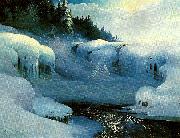 |
olof w. nilsson
|
|
1868-1956
född 12 oktober 1868 Norra Råda, Värmlands län, död 23 februari 1956, svensk konstnär, främst verksam i Karlstad, i Göteborgsregionen och i Lappland.
Nilsson deltog i det inre utsmyckandet av ett antal prestigefulla byggnader i Göteborg men gjorde sig även bekant som skicklig oljemålare med motiv hämtade såväl från Värmland och västgötabygden som från Lappland. Han är i dag främst ihågkommen som "fjällmålare". Även "isiga" landskap. |
|
|
|
|
|
|
|
|
|
|
|
|
|
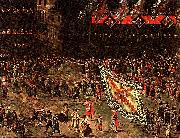 |
oranien
|
|
han mordades 1584 pa uppdrag av filip . i ett hus som idag ar museum over det nederlandska frihetskriget
se |
|
|
|
|
|
|
|
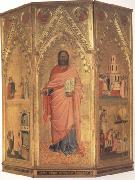 |
Orcagna
|
|
b Florence c 1320 d Florence 1368 |
|
|
|
|
|
|
|
|
|
|
|







